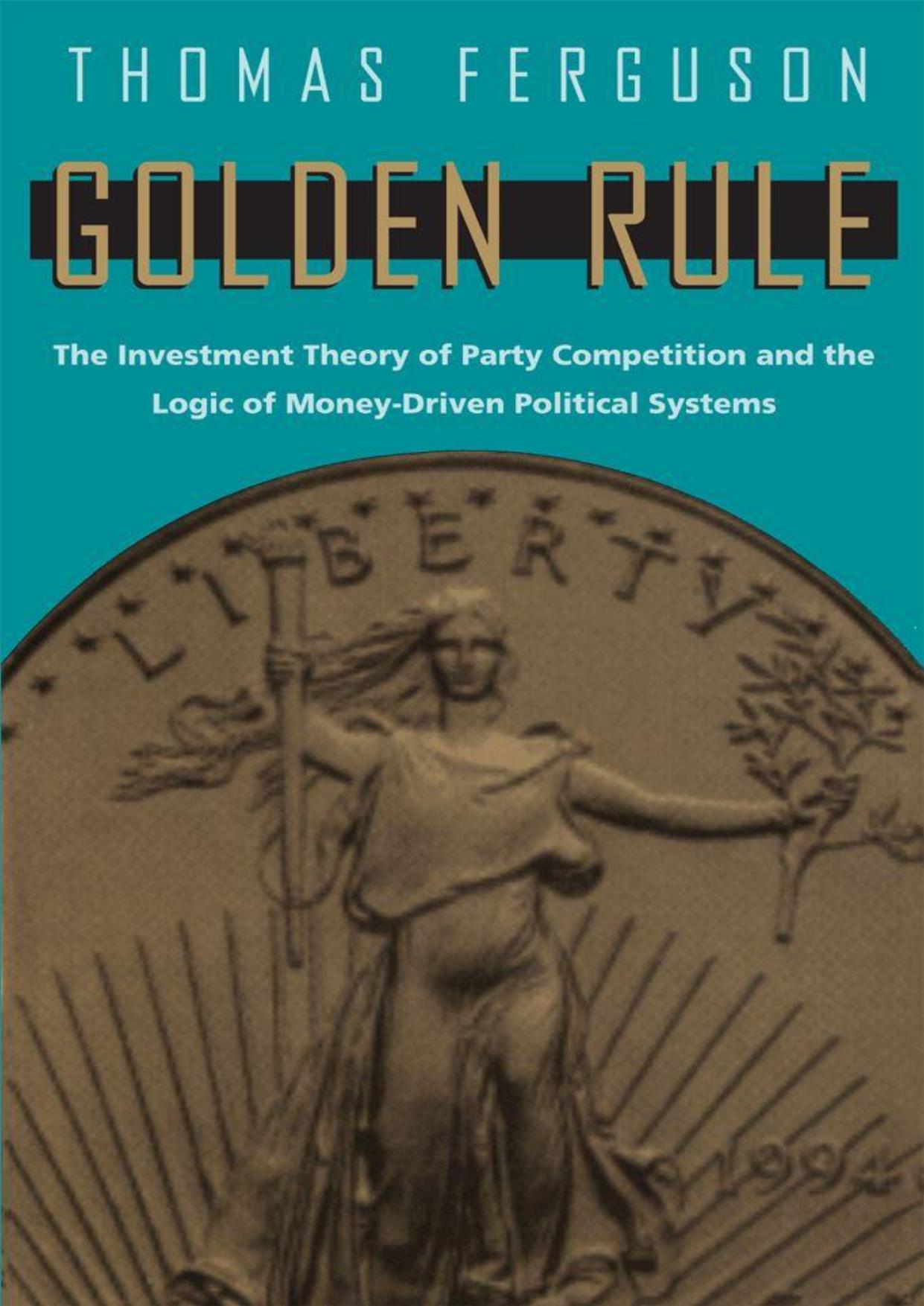Golden Rule: The Investment Theory of Party Competition and the Logic of Money-Driven Political Systems by Thomas Ferguson

Author:Thomas Ferguson [Ferguson, Thomas]
Language: eng
Format: epub, pdf
Publisher: The University of Chicago Press
Published: 1995-11-17T05:00:00+00:00
Source: Calculated from data from Federal Election Commission.
Note: Includes individual contributions, soft money, and PAC donations through the last week of October 1992.
A VERY EXPENSIVE PARTY
To understand the 1992 Democratic campaign and the new Clinton administration, it is essential to realize that the Nightly Business Report’s “handwriting on the wall” episode (discussed in the introduction to this book) was a culminating moment in a process that stretched back over a decade: the effort by center-right business groups to remake the party in the wake of the triumph of Reaganism. Though the first stirrings of this effort trace back to the Carter years, the most striking shifts occurred after the 1980 debacle.29
At that time—and subsequently, for this “right turn” had to be reconfirmed at every election—Democratic leaders could have tried to rally the millions of middle-class and poor Americans who were about to suffer the economic reverses that the party, in a vastly different context, was at last willing to discuss in the 1992 campaign. They could have tried, for example, to explain to voters what Reaganomics was really all about: the years of high interest rates and austerity that the President’s policies would entail; the massive export of American jobs that loomed; the steady deterioration of schools, roads, and services that would ensue; the demoralization, crime, and drugs that would mushroom in big cities and, eventually, in whole regions; the true costs of deregulating not only savings and loans, but airlines and the banking system; or the swelling tide of money that would corrupt all levels of government and overwhelm other forms of political participation.
For the most part, Democratic Party leaders did not even try to sound these warnings. Instead, as they contemplated the real estate boom around Washington and the skyrocketing compensation of America’s corporate managers, they decided to compete with the Republicans for funds. Amid much flatulent oratory about finding a “third way” between New Deal and Great Society liberalism (whose programs and formulas certainly needed updating), and facing what was then a newly self-confident Republican conservatism, the entire spectrum of respectable discussion in the party lurched to the right.30
In 1984 and 1988, the Democratic Party’s strategy for the presidential race turned on the pursuit of investor blocs disenchanted by one or another feature of Reaganomics: In 1984, investment bankers critical of the deficit (led, among others, by two New Yorkers named Robert Rubin and Roger Altman, who flew out to Minnesota to press Walter Mondale on the issue shortly before his ill-fated pledge to raise voters’ taxes) and of Reaganite talk of abolishing or weakening Roosevelt’s Glass-Steagall Act (which separated investment from commercial banking) flocked to the party. So did urban real estate interests (centered mostly in the Northeast and Midwest), whose needs for continuing federal aid for mass transit and the infrastructure put them at loggerheads with the Pentagon over a share of the budget.31
In 1988, this conservative, business-led, but not Republican coalition widened appreciably, as the investment bankers and real estate interests were joined by
Download
Golden Rule: The Investment Theory of Party Competition and the Logic of Money-Driven Political Systems by Thomas Ferguson.pdf
This site does not store any files on its server. We only index and link to content provided by other sites. Please contact the content providers to delete copyright contents if any and email us, we'll remove relevant links or contents immediately.
| Anthropology | Archaeology |
| Philosophy | Politics & Government |
| Social Sciences | Sociology |
| Women's Studies |
The Secret History by Donna Tartt(18196)
The Social Justice Warrior Handbook by Lisa De Pasquale(11957)
Thirteen Reasons Why by Jay Asher(8461)
This Is How You Lose Her by Junot Diaz(6452)
Weapons of Math Destruction by Cathy O'Neil(5842)
Zero to One by Peter Thiel(5502)
Beartown by Fredrik Backman(5369)
The Myth of the Strong Leader by Archie Brown(5244)
The Fire Next Time by James Baldwin(5024)
How Democracies Die by Steven Levitsky & Daniel Ziblatt(4966)
Promise Me, Dad by Joe Biden(4912)
Stone's Rules by Roger Stone(4867)
100 Deadly Skills by Clint Emerson(4696)
A Higher Loyalty: Truth, Lies, and Leadership by James Comey(4559)
Rise and Kill First by Ronen Bergman(4549)
Secrecy World by Jake Bernstein(4399)
The David Icke Guide to the Global Conspiracy (and how to end it) by David Icke(4386)
The Farm by Tom Rob Smith(4329)
The Doomsday Machine by Daniel Ellsberg(4250)
